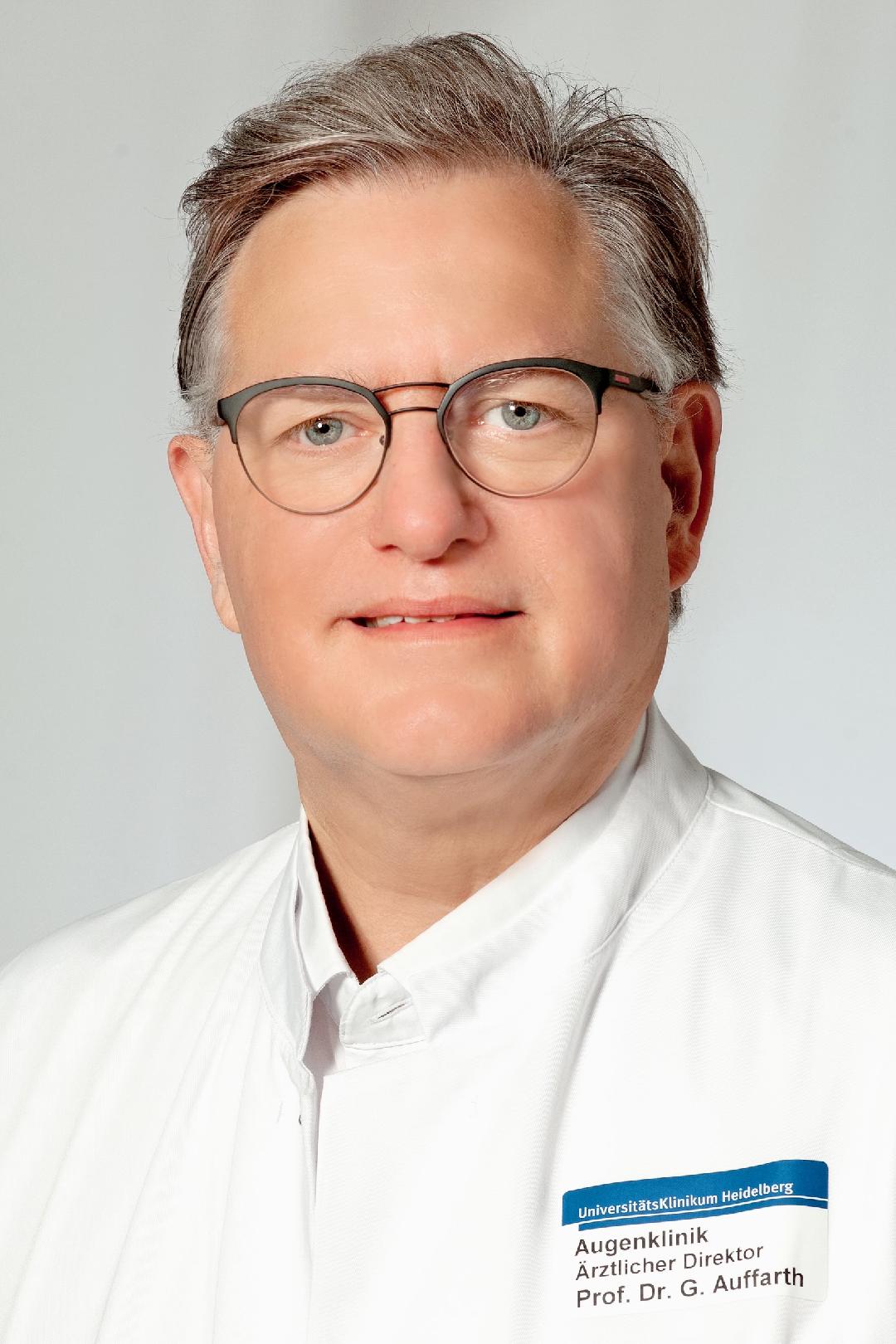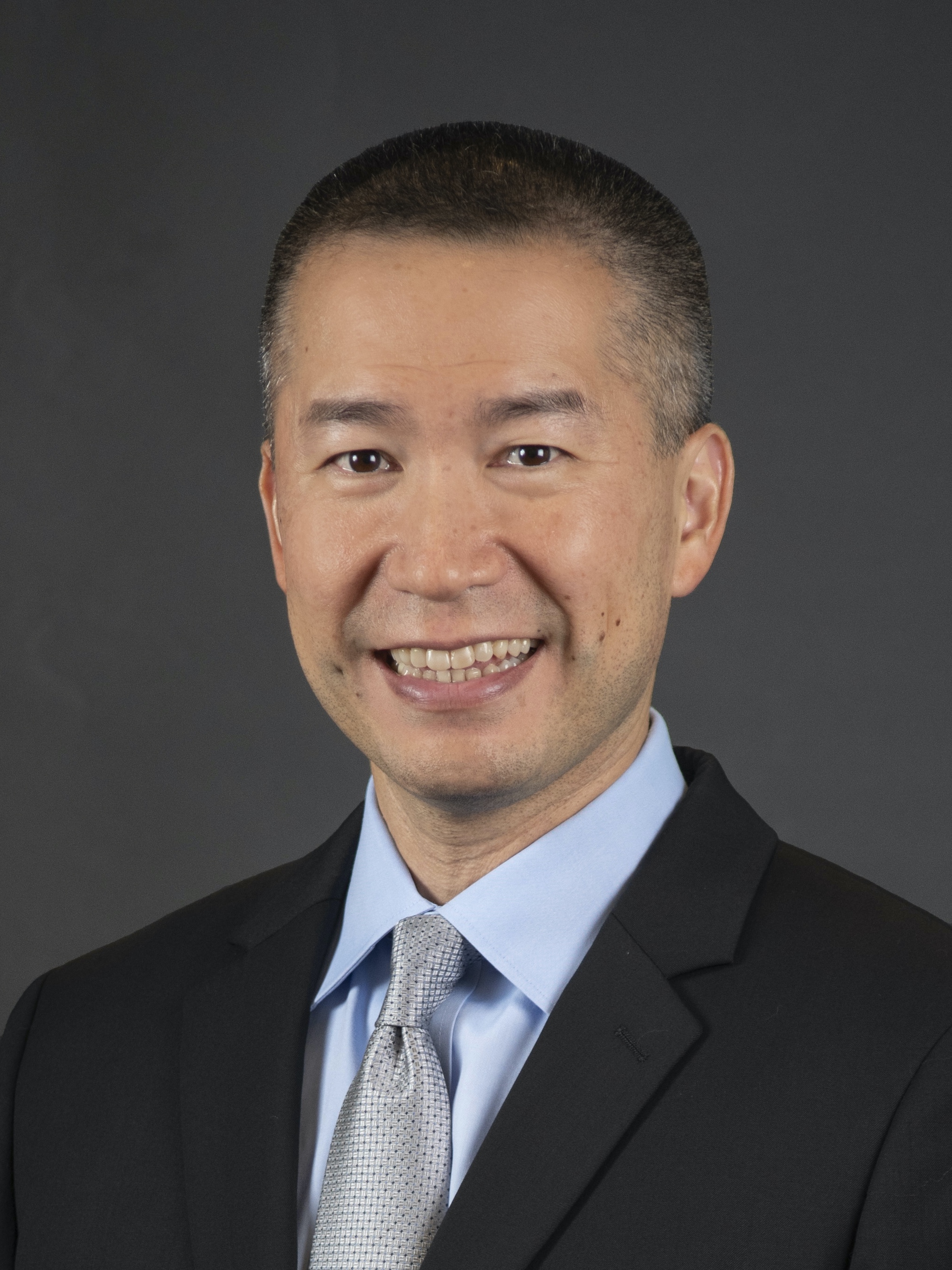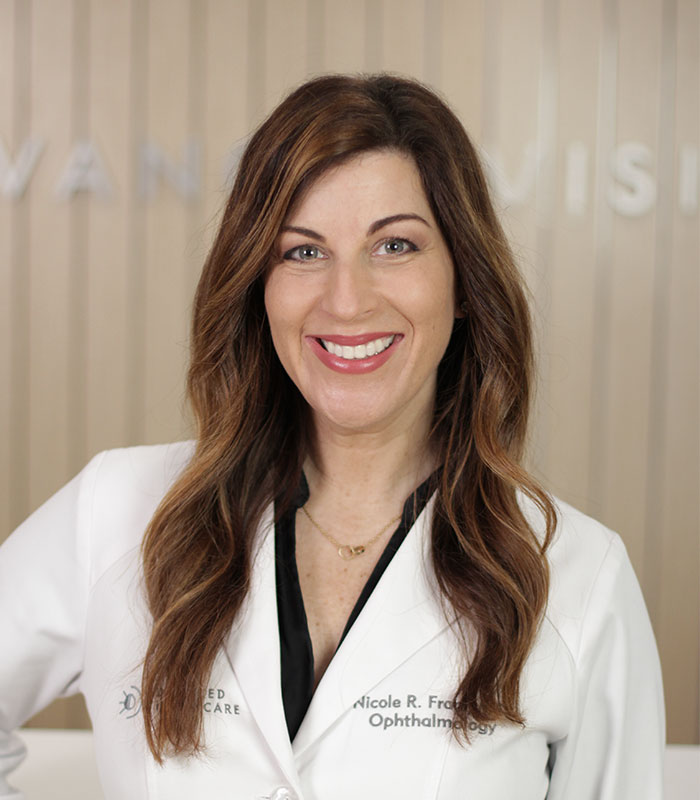INTERNATIONAL EXPERIENCES WITH NEW PRESBYOPIA-CORRECTING IOLs
BY ERIC D. DONNENFELD, MD (MODERATOR); IQBAL IKE K. AHMED, MD, FRCSC; GERD U. AUFFARTH, MD, PHD, FEBO; AND PAUL HARASYMOWYCZ, MD
Presbyopia-correcting IOLs continue to advance, and new designs that have been used internationally soon will arrive in the United States.
“Some of these IOLs coming to us during the next year are going to revolutionize the way we take care of patients undergoing cataract surgery,” said Eric D. Donnenfeld, MD. “I think the market will grow very dramatically. There’s going to be more continuous vision at all distances.”
SPECTACLE INDEPENDENCE
According to a 2020 Cataract & Refractive Surgery Today (CRST) clinical survey of 450 cataract and refractive surgeons, the top three goals for presbyopia-correcting IOLs are maximizing intermediate/near visual quality, minimizing residual refractive error, and maximizing distance visual acuity and visual quality (Figure 1). Nearly two-thirds of surgeons believe spectacle independence is most important to patient satisfaction. However, only 72% of patients are happy with their spectacle independence 1 month after surgery.
Figure 1. Responses to 2020 CRST Clinical Survey of 450 cataract and refractive surgeons by The Fundingsland Group in October 2020.
“When patients have a presbyopic IOL, they expect to be able to read, but they demand vision at distance,” Dr. Donnenfeld said.
“High-quality distance is key to success with presbyopic IOLs.” Multifocal and trifocal IOLs cover a large area, but there are gaps in the patient’s visual range (Figure 2).1

Figure 2. Different presbyopia-correcting IOL technologies create specific gaps within the patients’ visual range.
The AcrySof IQ PanOptix (Alcon) quadrifocal IOL provides excellent distance, intermediate, and near vision, with only a small dip in the intermediate range, but no lens provides completely continuous vision,2 according to Gerd Auffarth, MD, PhD, FEBO.
In Canada, surgeons have been pleased with the PanOptix, said Iqbal Ike K. Ahmed, MD, FRCSC.
However, compromises remain with multifocal IOLs.
“When implanting the Tecnis multifocal (Johnson & Johnson Vision), the PanOptix, or other technologies, patients gain something but at a cost, and usually the cost of that is the quality of the distance vision,” said Paul Harasymowycz, MD.
Having mixed and matched extended depth of focus (EDOF) IOLs, Dr. Harasymowycz does not want to compromise distance vision. “I want at least one of the eyes to have really good distance vision and quality of vision,” he said.
“With trifocal IOLs, patients have greater spectacle independence and unaided near vision, but we do not want dysphotopsia. EDOF lenses offer more forgiveness, less dysphotopsia, and higher quality of vision in terms of contrast sensitivity,” Dr. Auffarth said.
EDOF IOLs provide increased depth of focus at least 0.50 D at 20/30 compared with a monofocal IOL.3 In the clinical trial, the Tecnis Symfony (Johnson & Johnson Vision) increased depth of focus more than 0.50 D (~1.00 D) at 20/32 and improved visual acuity one to two lines through -4.00 D of defocus.3
The Tecnis Synergy (Johnson & Johnson Vision) diffractive IOL combines multifocal and EDOF technologies.4
“We’re excited about Synergy, particularly in its ability to help patients with a closer near point,” Dr. Ahmed said. There are also the potential benefits of low contrast and low light, he said.
QUALITY OF VISION
In the 2020 CRST clinical survey, only 70% of patients receiving presbyopia-correcting IOLs are happy with their visual quality and 66% with their level of dysphotopsia 1 month after surgery.
Dr. Auffarth attributed halos to the presence of multiple foci with multifocal IOLs and glare/flare and starbursts to ocular surface disease, posterior capsular opacification, or refractive error. He explained that lower adds create less dysphotopsia. “An EDOF IOL can create almost the same image level as a monofocal IOL,” he said.3
The nondiffractive wavefront-shaping AcrySof IQ Vivity (Alcon) extended range of vision IOL creates an extended focal range, providing improved intermediate and near vision compared with monofocal IOLs.5
The Tecnis Eyhance (monofocal plus) (Johnson & Johnson Vision), with a continuous higher order aspheric surface, improved intermediate vision.6 Distance vision and photopic phenomena were similar to a monofocal IOL.
Dr. Ahmed has adopted both lenses and explained that they serve different populations of patients who desire greater spectacle freedom.
“I think the compromises are coming less and less now,” Ahmed said.
Dr. Harasymowycz has had minimal to no halos with the Vivity and Eyhance, with a gain in intermediate vision and slight gain in near vision. “For patients who are averse to halos and glare or who have an underlying disease, such as an epiretinal membrane, dryness, or mild glaucoma, these are your go-to lenses,” he said.
Dr. Auffarth said the new EDOFs offer a range of vision. “In all these cases, we have reduced dysphotopsias or there are no dysphotopsias. With that, we have many more possibilities to address the unmet needs of our patients and their demands,” he said. “The key to selection is to understand the patient and have a willingness to compromise.”
REFERENCES
1. Carones F. An EDOF-multifocal IOL combines the best of both worlds. CRSToday Europe. January 2020.
2. Khoramnia R, Yildrim TM, Tandogan T, et al. Optical quality of three trifocal intraocular lens models: an optical bench comparison. Der Ophthalmologe. 2018;115(1):21.28.
3. Auffarth GU. Optical fundamentals of refractive IOL correction. Presented at: ESCRS Annual Meeting; September 14-18, 2019; Paris, France.
4. Chang DH, Auffarth GU, et al. Visual outcomes and defocus curve profile of a next-generation diffractive presbyopia-correcting intraocular lens. Poster. ESCRS Annual Meeting; September 14-18, 2019.
5. FDA. www.fda.gov/medical-devices/recently-approved-devices/acrysoftm-iq-vivitytm-extended-vision-intraocular-lens-iol-modeldft015-acrysoftm-iq-vivitytm-toric. Accessed June 8, 2021.
6. Auffarth GU, Gerl M, Tsai L, et al; Quantum Study Group. Clinical evaluation of a new monofocal intraocular lens with enhanced intermediate function in cataract patients. J Cataract Refract Surg. 2020 Sep 3. Epub ahead of print. PMID: 32932369.
MASTERING THE FUNDAMENTALS OF PRESBYOPIA-CORRECTING IOLs:
MINIMIZING POSTOPERATIVE REFRACTIVE ERRORS AND EVALUATING QUALITY OF
VISION BY OPTIMIZING MATERIALS
BY DOUGLAS D. KOCH, MD (MODERATOR); DANIEL H. CHANG, MD; AND CATHLEEN M. MCCABE, MD
Patients investing in presbyopia-correcting IOLs have high expectations of their visual outcomes. By understanding lens designs and materials, surgeons can make the most of advanced technologies.
LENS DESIGNS AND MATERIALS
Small changes in lens designs can significantly impact quality of vision, and incremental improvements can significantly impact patient satisfaction, especially with presbyopia-correcting IOLs. Key issues include lens edge design, anterior surface, spherical aberrations, UV blocking, and blue and violet light filtering.
Although square-edge IOLs were designed to prevent posterior capsular opacification, Cathleen M. McCabe, MD, explained that they can be associated with edge glare in the early postoperative period. However, designs have been modified to minimize that effect.
It’s also important to keep in mind that with designs with a high index of refraction and a low radius of curvature, it may be possible to see the glint from the anterior surface, Dr. McCabe said.
Aspheric IOLs significantly improve image quality and increase contrast sensitivity. Dr. McCabe explained that increasing spherical aberration improves the depth of field, but it is better to neutralize the total spherical aberration of the eye to achieve the best quality of vision.
Surgeons can match the spherical aberration of the lens with patients’ needs and the spherical aberration predicted in the cornea, she said. For example, negative spherical aberration is increased in a patient who had previous hyperopic LASIK. Therefore, an IOL with a negative spherical aberration in the lens design is not desirable in these cases.
The primary purpose of an IOL is to focus light. Daniel H. Chang, MD, explained that IOL chromophores have been used to filter different types of light. Blue light, sometimes ambiguously defined to include violet wavelengths, has been associated with digital eye strain and sleep disruption.
According to Dr. Chang, it can be helpful to filter some wavelengths but not others, and eye care practitioners need to understand specific wavelength effects rather than broad colors. “If you broadly call it blue light, you may not have the specificity to filter out just the harmful and to keep what may actually be physiologically good for the eye and for health,” Dr. Chang said.
High-energy visible light can affect visual quality and function, including scotopic vision, chromatic aberration, and light scatter and contrast, phototoxicity, and circadian rhythm.
A clinical study showed that patients with a violet light-filtering IOL were less frustrated with their vision and night driving compared with those with a colorless UV-filtering IOL (Figure 1).1 “Even in a monofocal IOL, you have less light scatter, less contrast, so applying this technology to a presbyopia-correcting lens can be beneficial as well,” Dr. Chang said.

Figure 1. Study subjects with violet light-filtering IOLs were more likely to have no difficulty driving at night compared with those with clear
UV-filtering IOLs.
“The key is not to oversimplify things just by the color of the light or the IOL but to look at the specific wavelengths and consider how they affect the various important components of our vision,” Dr. Chang said. “It is important to filter the detrimental and to keep the healthy. If specific wavelengths can be both healthy and detrimental, it is best not to filter because you can always alter your environmental light exposure or simply put on a pair of sunglasses.”
MINIMIZING POSTOPERATIVE REFRACTIVE ERROR
The 2020 CRST Clinical Survey of 450 cataract and refractive surgeons found that approximately 70% of their patients receiving presbyopia-correcting IOLs were happy with their visual quality 1 month after surgery, 72% were happy with their spectacle independence, and 66% were happy with their level of dysphotopsia.
“Multifocal IOLs have an increased risk of halos and glare,” Dr. McCabe said. “Compared with monofocal patients, patients with multifocal IOLs are much more likely to have positive dysphotopsias as one of their complaints and sources of dissatisfaction. Also, it’s much more important to hit the refractive target.” Other sources of dissatisfaction include dry eye, problematic near point, posterior capsular opacification, comorbidities, neuroadaptation, and unrealistic expectations.
Survey respondents were more likely to use astigmatic keratotomy or limbal relaxing incisions for lower levels of astigmatism and presbyopia-correcting toric IOLs for higher levels of astigmatism (Figure 2).

Figure 2. Responses to 2020 CRST Clinical Survey of 450 cataract and refractive surgeons by the Fundingsland Group in October 2020.
In a study of more than 17,000 eyes that had refractive lens exchange with multifocal IOLs, as cylinder increased, the likelihood of being dissatisfied or very dissatisfied increased because visual acuity decreased with increasing cylinder.2
“Extended depth of focus lenses, though, may be a bit more tolerant to this residual refractive error, and even refractive errors up to 0.75 D can be tolerated with very minimal impact on monocular and binocular visual acuity with these strategies,” Dr. McCabe said.3
If an enhancement is necessary, Dr, McCabe waits 4 to 6 months to see how patients adapt to their new vision. “I also maximize the ocular surface and treat dry eye,” she said. “Let’s get their ocular surface in the best shape possible, anticipating that postoperative to their enhancement, their dry eye disease will temporarily worsen.”
Douglas D. Koch, MD, waits at least 3 months. “We know that astigmatism can change. The wound is remodeling,” he said. “It’s good to give them a little extra time if possible.”
If posterior capsular opacification appears significant, Dr. Chang performs a YAG capsulotomy before an enhancement.
If a patient is firmly dissatisfied and a lens exchange is necessary, Dr. Chang performs it within the first 3 months postoperatively. If the patient is uncertain, he waits.
Dr. Koch also waits unless the patient has severe glare and is very unhappy.
If a trial lens shows that correcting the astigmatism will improve the patient’s vision, Dr. Chang may adjust a toric IOL or perform an enhancement with an excimer laser if it is a refractive miss.
“I would add that relaxing incisions are easy and highly effective in these patients when the spherical equivalent is around plano,” Dr. Koch said.
ACHIEVING PATIENT SATISFACTION
“The key is to screen carefully beforehand, counsel well, set expectations, plan meticulously, do the surgery, and be ready to follow up,” Dr. Chang said.
Surgeons must also determine what the patient wants to prioritize in terms of intermediate and near vision. “I like to emphasize to patients that where they are going to see postoperatively is a choice that they need to make,” Dr. McCabe said.
REFERENCES
1. Chang D, Rosen R, Thomas E, et al. Violet light-filtering IOLs: visual and non-visual benefits. Presented at: AAO Annual Meeting; November 13-15, 2020; virtual.
2. Schallhorn S. The importance of astigmatism in premium IOLs. Cataract & Refractive Surgery Today. January 2020.
3. Cochener B. Tecnis Symfony intraocular lens with a “sweet spot” for tolerance to post- operative residual refractive errors. Open J Ophthalmol. 2017; 7:14-20.
EXPANDING THE USE OF PRESBYOPIA-CORRECTING IOLs IN PATIENTS WITH
COMORBID CONDITIONS
BY ERIC D. DONNENFELD, MD (MODERATOR); MARJAN FARID, MD; CONSTANCE OKEKE, MD, MSCE; AND KARL G. STONECIPHER, MD
Patients seeking to reduce their spectacle dependence with presbyopia-correcting IOLs often have comorbidities that impact lens selection.
OCULAR SURFACE DISEASE
Advancements in lens technologies are often lost if patients do not have a pristine ocular surface, said Marjan Farid, MD. The ACSRS preoperative ocular surface disease (OSD) algorithm emphasizes rapid tear film rehabilitation in preoperative patients with visually significant OSD.1 “You want to turn around their inflammation, improve their oil layer, and clean up the punctate keratitis,” Dr. Farid said. She begins with topical low-dose loteprednol and long-term lifitegrast or cyclosporine. She uses thermal pulsation and omega-3 supplements to treat the meibomian glands, educates patients about OSD to improve adherence, and reassesses them 2 to 4 weeks later.
An active 66-year-old woman had significant staining, significant meibomian gland dysfunction (MGD) on meibography, rapid tear breakup time (TBUT), high tear osmolarity, and positive tear film inflammatory cytokines. She used short-term loteprednol, lifitegrast, preservative-free artificial tears or serum tears, and thermal pulsation and helped set the patient’s expectations.
“Her initial pretreatment biometry suggested we put in a diffractive toric extended depth of focus (EDOF) lens,” Dr. Farid said. “After we treated her ocular surface and she returned for follow up, not only was her astigmatism significantly different, but also the power of the lens (Figure 1). If we had used our initial biometry, we would not have nailed our target and we would have had a poor outcome.”

Figure 1. Optical biometry before and after MGD treatment.
PREVIOUS REFRACTIVE SURGERY
Patients who had previous corneal refractive surgery have high expectations from cataract surgery. Karl G. Stonecipher, MD, explained that his preoperative workup includes an Ocular Surface Disease Index (OSDI) questionnaire, tear breakup time, lissamine green staining, corneal tomography, corneal topography, optical coherence tomography (OCT), and confocal fundus imaging. He also talks with the patient about their previous refractive surgery results to determine how to achieve optimum results.
Various options offer these patients the opportunity to decrease spectacle dependence. For example, according to Dr. Stonecipher, monofocal Tecnis Eyhance IOLs (Johnson & Johnson Vision) allow a bit more defocus, with fewer side effects than some IOLs. “I am defocusing these lenses a little bit on both sides, about -0.25 D in their dominant eye and about -0.75 D in their nondominant eye, and they are doing extremely well,” he said.
Although patients do not achieve the same vision from a nondiffractive EDOF IOL as they would with a trifocal IOL, they have fewer side effects, Dr. Stonecipher said. Dr. Stonecipher sees many patients who have had LASIK for hyperopia and who have corneal asphericity. “If we implant an aspheric lens in these patients, we are going to increase the asphericity and change their contrast,” he said. In a patient who had keratoconus in the right eye and penetrating keratoplasty with a 60.00-D cornea in the left eye (Figure 2), Dr. Stonecipher implanted an Eyhance 5.00-D toric DIU 600 IOL in her right eye, defocusing it approximately -1.00 D, with a final result of -0.50 to -0.75 D. He also implanted a 5.00-D toric DIU 600 in the left eye. Her vision is 20/25 in her right eye and 20/100 in her left eye.

Figure 2. This patient presented with a severely steep cornea OU and had a poor visual outcome previously after penetrating keratoplasty. Dr. Stonecipher implanted an Eyhance 5.00-D toric DIU 600 OU, and the patient was pleased with the outcome despite decreased vision OS. Her vision is currently best in her right eye, and she uses the left eye for near vision tasks.
“You implant the best lens you can and then think about what you can do postoperatively,” Dr. Stonecipher said.
“Patients who have undergone previous LASIK have high expectations for improving uncorrected visual acuity following cataract surgery. Mildly decentered ablations and higher-order aberrations that can preclude the use of traditional multifocal IOLs often benefit greatly from extended depth of focus IOLs,” Dr. Donnenfeld said.
CORRECTING PRESBYOPIA IN PATIENTS WITH GLAUCOMA
Glaucoma stage is a key factor in determining whether a patient is a good candidate for a presbyopia-correcting IOL. “We also want to know about the stability of their glaucoma: Are they controlled? Do they need more pressure lowering or are they on their medicines? Do they want to come off those medicines? Those are the questions you want to ask as you want to think about this as a possible combined procedure,” said Constance Okeke, MD.
Before cataract surgery, Dr. Okeke assesses and treats the ocular surface and switches topical medications to preservative-free or gentler formulations and combination formulations.
“Also, if you’re performing cataract surgery on patients with glaucoma, think about minimally invasive glaucoma surgery (MIGS),” Dr. Donnenfeld said. “That’s a wonderful way to decrease the burden of eye drops and improve the ocular surface.”
“Because of the expansion of nondiffractive EDOF IOLs, I have pushed the envelope quite a bit and have been extremely satisfied,” said Dr. Okeke, adding that they act like monofocal IOLs in terms of lacking haloes, starbursts, and glare, which is important in patients with glaucoma.
Because of dysphotopsias, it is important to choose non-diffractive IOLs, according to Dr. Okeke. She also does not use monovision IOLs in patients with significant glaucoma because they can lose depth perception as the disease advances. However, she has found that toric IOLs work well.
Dr. Okeke saw a 77-year-old woman who was referred for a MIGS evaluation. Her vision declined at near and distance, and she did not drive because of nighttime glare and haloes. She used latanoprost every night at bedtime in both eyes. Her preoperative IOPs were 17- and 19-mm Hg, pachymetry was normal, and she had mild superficial punctate keratitis in both eyes. Her cup-to-disc ratio was 0.50 D OD and 0.65 D OS, but the left eye had early notching superiorly. Gonioscopy was normal. Visual fields showed early signs of superior arcuate in the right eye and inferior arcuate but nasal step in the left eye with a cecocentral scotoma, encroaching upon fixation. OCT showed more changes in the left eye.
She was hyperopic in the right eye, and the left eye showed myopic shifting and mild astigmatism (Figure 3). She had a significant brightness acuity test (20/400 in both eyes). She also had meibomian gland dysfunction, which she treated with an in-office heat-based treatment, and significant cataracts in both eyes.

Figure 3. Nikon OPD was used to assess astigmatism as well as gain insights on ocular surface disease with evaluation of Placido discs.
Dr. Okeke implanted an AcrySof IQ Vivity toric IOL (Alcon) combined with an electrosurgical ab interno goniotomy, which is a MIGS procedure.
The patient’s postoperative VA was 20/20 in both eyes at distance and intermediate; her near vision was J2.
“The patient also did well postoperatively with her glaucoma, with less medication and lower eye pressures,” said Dr. Okeke.
REFERENCES
1. Starr CE, Gupta PK, Farid M, et al; ASCRS Cornea Clinical Committee. An algorithm for the preoperative diagnosis and treatment of ocular surface disorders. J Cataract Refract Surg. 2019;45(5):669-684.
INNOVATIONS IN PHARMACOLOGICAL TREATMENTS FOR PRECATARACT
PRESBYOPIC PATIENTS
BY EDWARD J. HOLLAND, MD (MODERATOR); MARJAN FARID, MD; AND NICOLE FRAM, MD
The onset of presbyopia presents greater challenges in the digital age, but new options are emerging to treat this condition.
“We have a growing aging population, and their lifestyles are changing,” said Edward J. Holland, MD. “Everyone is spending more time on screens, whether it’s a phone, tablet, or a computer, and they would like to explore options, not to be dependent on reading glasses.”
Current options for precataract patients include reading glasses, multifocal contact lenses, and monovision with contact lenses, as well as corneal refractive surgery with blended vision or monovision, corneal inlays, and refractive lens exchange (Figure 1).
However, new pharmacologic treatments may soon offer new opportunities.

Figure 1. Stages of presbyopia.
“That’s a higher score than almost any other disorder in our field, so these patients are suffering more than they let on and more than we want them to deal with,” said Marjan Farid, MD.
“I think pharmacological agents will have a good uptake from patients because they are something they can put in when they need them and they don’t need to make a surgical commitment,” Dr. Farid said.
“Once the word is out that there is an eye drop that reduces your need for reading glasses, it will pull patients into optometric practices, increase the volume of patients, and probably increase general glasses sales as well because you’re not necessarily putting in a drop every day,” Dr. Farid said.
Nicole Fram, MD, also believes this innovation can help clinicians build relationships with each other. “This is a perfect opportunity to make the initial contact with the patient and then establish a relationship with the optometrist who can continue the presbyopia care,” she said. “Then you have this bridge with the optometrist as the primary care until there’s surgical involvement for lens-based surgery in the future.”
Dr. Fram also suggested that pharmacologic treatments for presbyopia will be a lifestyle bridge.
INTEGRATING TREATMENT
“We’re all excited about pharmacological treatment because of the ability to control it, titrate it, and put the control in the hands of the patient,” Dr. Fram said.
She said clinicians should discuss with patients their specific needs and emphasize that they may still need reading glasses in certain circumstances. Patients should also be carefully instructed on proper use of the medication and potential side effects.
“Many of the pharmacological options for presbyopia involve a miotic, and we want a medication that will avoid excessive miosis, headache, and dimming of vision. There is a ‘sweet spot’ for pupil size that allows for a depth of focus while maintaining adequate illumination and distance vision,” Dr. Fram said. “Any time you implement a new technology that you haven’t used before, I like to bring patients back at 3 and 6 months to assess for side effects.”
PHARMACOLOGICAL OPTIONS
A variety of pharmaceutical options are being studied, such as miotic-based drops, lens restoration drops, and combination therapies.
Miotics, such as pilocarpine, carbachol, and aceclidine, ideally will reduce the pupil size to increase near vision without reducing distance vision or the depth of field. Although pinhole inlays have been associated with reduced visual peripheral field, Dr. Holland said, this has not been observed in trials with these drops.
When pilocarpine is used at high concentrations to treat glaucoma, side effects may include headache and brow ache, red eyes, ciliary spasm, and others. Some companies are examining drug combinations that may reduce side effects, and the impact of chronic drops on the ocular surface needs to be considered.
Used bilaterally once daily for 30 days in a phase 3 clinical trial, 1.25% pilocarpine (AGN-190584, Allergan) showed statistically significant increases in distance corrected near visual acuity (DCNVA) of at least 3 lines in mesopic conditions without loss of more than 5 letters of CDVA.1
In October 2020, enrollment began in phase 3 clinical trials (NEAR-1 and NEAR-2, 300 subjects per study) for preservative-free, low-dose pilocarpine in a multifaceted vehicle (CSF-1, Orasis). In a phase 2b trial, it was used twice daily for 2 weeks.2,3 Forty-seven percent of the treated group and 16% of the vehicle-treated group achieved at least 3 lines of improvement in DCNVA. Eighty percent achieved more than 2 lines of improvement. Adverse effects were mild or temporary, with no redness and high comfort levels. In another product, a dispenser delivers a microdose of pilocarpine 1% or 2% (MicroLine, Eynovia) to the ocular surface; effects last 3 to 4 hours.4 “The concept of the microdose is to reduce the side effects of redness that can be seen with that concentration of pilocarpine,” Dr. Holland said. Phase 3 trials are underway.
A combination of carbachol and brimonidine (Brimochol, Visus) was used once daily in early trials.5 Improvement of near visual acuity of five Jaeger lines or greater was reported, and the effect lasted up to 12 hours. It was well tolerated, without significant side effects. Phase 2 trials are in progress.
In phase 2b trials of aceclidine with tropicamide (PRX-100, Presbyopia Therapies), 47% of eyes gained at least 3 lines of DCNVA and 92% gained at least 2 lines.6 The company completed a small-scale phase 2b study in mid-2018 and has not yet reported enrolling patients in phase 3.
A lipoic acid (EV-06, Novartis) oxidizes the disulfide bonds in the lens, improving its flexibility and restoring some accommodation.7 In a phase 2a clinical trial, subjects achieved DCNVA of 20/22 versus 20/40 in controls, which lasted beyond the 301-day follow-up after a 90-day treatment.
CONCLUSION
“We have many options under investigation for the pharmacologic treatment of presbyopia. From the clinical trials we can see consistent improvement in near visual acuity with a rapid onset and a variable duration of action from several of these medications,” Dr. Holland said. “We hope to have acceptable reading without a significant decrease in distance or night vision, which will be very desirable for patients. These drops appear to have minimal adverse events.”
REFERENCES
1. https://news.abbvie.com/news/press-releases/allergan-an-abbvie-company-announces-positive-phase-3-topline-results-for-investigational-agn-190584-for-treatment-presbyopia.htm. Accessed June 8, 2021.
2. https://clinicaltrials.gov/ct2/show/NCT02780115
3. https://clinicaltrials.gov/ct2/show/NCT03885011
4. https://www.clinicaltrials.gov/ct2/show/NCT04657172
5. Abdelkader A. Influence of different concentrations of Carbachol drops on the outcome of presbyopia treatment—a randomized study. Int J Ophthalmol Res. 2019;5(1):317-320.
6. https://clinicaltrials.gov/ct2/show/NCT03201562
7. https://clinicaltrials.gov/ct2/show/NCT03809611
MATCHING PRESBYOPIA-CORRECTING TECHNOLOGY TO INDIVIDUAL CATARACT
PATIENT NEEDS
ELIZABETH YEU, MD (MODERATOR); BRANDON D. AYRES, MD; AND KAROLINNE M. ROCHA, MD, PHD
As presbyopia-correcting IOL options evolve and expand, communication is important in matching patients to the technology that will help them achieve their visual goals. “With a presbyopia-correcting IOL, it’s the art and science of matching the technology to the patient,” said Karolinne M. Rocha, MD, PhD. “We’re more confident offering these technologies to the patients, and our premium cases have increased over the years.”
CONSISTENT MESSAGING
“The goal of patient education is to improve patient outcomes and, of course, expectations,” Dr. Rocha said. Patient conversations help eyecare professionals customize selection of the presbyopia-correcting implant that is best for the patient, said Brandon D. Ayres, MD.
It is essential to understand the patient’s lifestyle, personality, expectations regarding spectacle independence, and ocular characteristics and conditions that could impact IOL choice, Dr. Ayres said. In this process, there are multiple touchpoints between the patients and practice. This begins with literature or questionnaires mailed to the patient, followed by touchpoints with the reception staff, technicians, physician, and surgical scheduling, followed by an additional touchpoint to make sure patients understand their options.
Most patients want to be spectacle free, and each presbyopia-correcting IOL has some level of compromise, Dr. Ayres said. “As you move up the scale from an enhanced monofocal to a refractive or diffractive extended depth of focus IOL all the way through trifocal, you’re going to gain flexibility. But you also may gain dysphotopsias or have a mild decrease in contrast because you’re at some level splitting or refracting light.”
Defined staff roles for consistent messaging are important during this journey. “The technical staff knows that when we have consistent messaging from start to finish, it plays a strong role in what the patient thinks and makes it easier for the doctor to have that discussion because the seed has already been planted,” Dr. Ayres said.
“You start with the assumption that patients are going to get presbyopia-correcting IOLs, and if they do not want to, they have to opt out,” Dr. Ayres said. “That way, the entire office is on the same plane.”
The discussion focuses on the freedom of spectacle independence. He also describes how they help patients if they are dissatisfied after surgery. “Know your patients. Know your IOLs. Have defined roles throughout that journey and consistent messaging, and make sure you can meet those expectations,” Dr. Ayres said.
ENHANCED COMMUNICATION
Technology can be used to enhance communication. Practices often send patients educational videos or post them on their websites. Patients also watch videos while they wait for the technician or physician. “It makes our lives easier when patients walk in and know that they have options and may be a good candidate for premium lenses,” Dr. Rocha said. Staff also can encourage patients to check the website or send them educational materials.
Dr. Rocha shows patients their diagnostic images to explain her findings and how they impact their vision and lens selection (Figure 1). Simulators also help patients understand what they may expect from their lens choice.

Figure 1. Diagnostic images help clinicians educate patients about their condition.
DETAILS FOR DISCUSSION
Elizabeth Yeu, MD, stressed the importance of considering the patient’s personality when choosing an IOL technology. For example, a perfectionist may want a complete range of vision but be sensitive to haloes or glare.
In addition, patients may desire a complete range of vision but do not want to pay for premium IOLs.
When patients express that a friend achieved a full range of vision from cataract surgery without additional costs, Dr. Ayres explains that he offers lens options based on the patient’s specific desired results. “Then we take the conversation from there,” he said.
Even if patients are not initially interested in presbyopia-correcting IOLs, Dr. Ayres describes the full range of options. Patients who choose monofocal IOLs may not be pleased they cannot read after surgery, so it is important to have at least discussed the presbyopia-correcting options, even if the patient is not a good candidate for presbyopia correction, he said. Therefore, he assumes virtually everyone may opt for presbyopia correction.
However, there are options even if patients do not have a premium IOL budget. “I do not want anyone leaving the office feeling bad,” Dr. Rocha said. “Even for Medicare patients, we can offer monovision.”
“Absolutely,” said Dr. Yeu. “Especially now with our enhanced monofocals; the cost point may make a lot more sense, especially with low cylinder.”
STRENGTHENING CONNECTIONS WITH REFERRING DOCTORS
Clinicians also need to build communication with their referring doctors. Many cataract patients have dry eye disease, which can impact preoperative measurements and visual outcomes, especially with advanced technology IOLs.1 “Ocular surface optimization is certainly something the optometrist can do,” Dr. Rocha said. “It is much easier when the patient is ready for surgery.”
Patients lose trust in the process when the surgeon is the first one to identify dry eye, according to Dr. Yeu. “The more we help educate doctors who refer to us, it can help elevate the process, improve communication, and put good faith in patients regarding their caregivers,” she said.
Staff also are valuable allies in this process. “In the past 12 to 24 months, we have expanded our dry eye center and there is a dry eye counselor that I work with closely,” Dr. Yeu said. She discusses the importance of treating dry eye and describes in-office treatment options with patients before cataract surgery. “She drives home the message and helps provide consistent messaging, which can be extremely helpful for patients,” Dr. Yeu said.
Comanaging optometrists need to understand presbyopia-correcting IOL technologies and know which patients are good candidates. Doctors must rule out retinal diseases, glaucoma, corneal scars, irregular astigmatism, and other conditions, Dr. Rocha said (Figures 2 and 3).

Figure 2. A dense cataract with pseudoexfoliative material on the pupil border and anterior lens capsule. Both the mature lens and the pseudoexfoliation put a patient at higher risk for surgical complications.

Figure 3. Epiretinal membrane with blunting of the foveal contour. Dr. Yeu explained that a patient with this level of architectural change would not be a good candidate for a diffractive multifocal IOL technology.
CONCLUSION
“To match the proper lens to the proper patient, there are key essential steps that include the conversation and education where we try to understand our patient better, understand the technologies that are already available today that have expanded who we can offer presbyopia-correcting IOLs to,” Dr. Yeu said. “We need to educate our patients. It does not all fall on us. It can occur before, during, and after the consultation because we want to meet, or quite frankly, exceed their expectations.”
REFERENCES
1. Epitropoulos AT, Matossian C, Berdy GJ, Malhotra RP, Potvin R. Effect of tear osmolarity on repeatability of keratometry for cataract surgery planning. J Cataract Refract Surg. 2015;41(8):1672-1677.






























